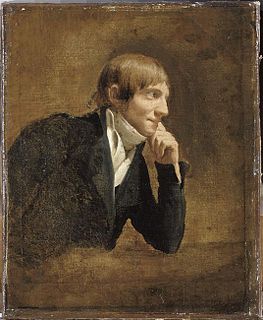
Pierre-Joseph Redouté, was a painter and botanist from Belgium, known for his watercolours of roses, lilies and other flowers at Malmaison, many of which were published as large, color stipple engravings. He was nicknamed "the Raphael of flowers" and has been called the greatest botanical illustrator of all time.

Red Rose Speedway is the second studio album by Paul McCartney and Wings. The album was released in 1973 after the relatively weak commercial performance of Wings’ previous album, Wild Life. Red Rose Speedway peaked at number 5 on the UK Albums Chart and number 1 on the Billboard Top LPs & Tape chart in the United States, while "My Love" was a number 1 single in the US. Despite this commercial success, the album was given a mixed response by music critics, with several reviewers considering the songs to be inconsequential.
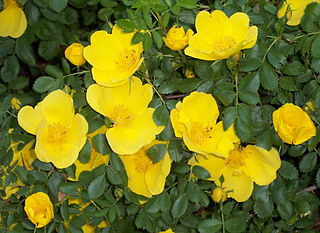
Rosa foetida, known by several common names, including Austrian briar, Persian yellow rose, and Austrian copper rose, is a species of rose, native to the foothills of the Caucasus Mountains in Georgia. It has yellow flowers with a scent which some find objectionable. Since there were no yellow roses native to Europe, its introduction from Persia was an important addition to the cultivation of roses, and R. foetida is now an important contributor to the stock of cultivated roses.
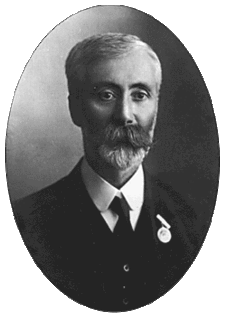
Joseph Henry Maiden was a botanist who made a major contribution to knowledge of the Australian flora, especially the Eucalyptus genus. This botanist is denoted by the author abbreviation Maiden when citing a botanical name.

Gotthilf Heinrich Ernst Muhlenberg was an American clergyman and botanist.
Stephen Donald Hopper AC FLS FTSE is a Western Australian botanist, graduated in Biology, specialising in conservation biology and vascular plants. He has written eight books, and has over 200 publications to his name. He was Director of Kings Park in Perth for seven years, and CEO of the Botanic Gardens and Parks Authority for five. He is currently Foundation Professor of Plant Conservation Biology at The University of Western Australia. He was Director of the Royal Botanic Gardens, Kew from 2006 to 2012.

William Griffith was a British doctor, naturalist, and botanist. Griffith's botanical publications are from India and Burma. After a brief stay in Madras, he was assigned as a Civil Surgeon to Tenasserim, Burma, where he studied local plants and made collecting trips to the Barak River valley in Assam. He explored various parts of Burma, traveling the rivers, including the Irrawadi as far as Rangoon. He visited the highlands of Sikkim, and the region of the Himalayas around Shimla. Subsequently, Griffith was appointed as Civil Surgeon in Malacca, where he died of a parasitic liver disease.

Henry Charles Andrews, was an English botanist, botanical artist and engraver.
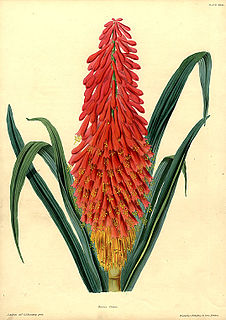
James Andrews (1801–1876) was an English draughtsman, botanical painter and illustrator noted for his accomplished illustrations. He also taught flower-painting to young ladies. He created the illustrations for the famous nature writer Sarah Bowdich Lee's 1854 book Trees, Plants, and Flowers: Their Beauties, Uses, and Influences.
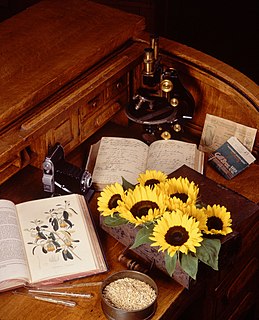
Cultivated plant taxonomy is the study of the theory and practice of the science that identifies, describes, classifies, and names cultigens—those plants whose origin or selection is primarily due to intentional human activity. Cultivated plant taxonomists do, however, work with all kinds of plants in cultivation.

Hakgala Botanical Garden is one of the five botanical gardens in Sri Lanka. The other four are Peradeniya Botanical Garden, Henarathgoda Botanical Garden, Mirijjawila Botanical Garden and Seetawaka Botanical Garden. It is the second largest garden in Sri Lanka. The garden is contiguous to Hakgala Strict Nature Reserve.
William Philip Honywood was an English Whig politician who sat in the House of Commons from 1818 to 1830.
William Honywood was a British soldier and Whig politician who sat in the House of Commons from 1806 to 1812.

The International Inventions Exhibition was a world's fair held in South Kensington in 1885. As with the earlier exhibitions in a series of fairs in South Kensington following the Great Exhibition, Queen Victoria was patron and her son Albert Edward, the Prince of Wales, was president of the organising committee. It opened on 4 May and three and three-quarters of a million people had visited when it closed 6 months later.

Sir James Hales was an English judge from Kent, the son of the politician and judge John Hales. Though a Protestant, he refused to seal the document settling the crown on the Protestant claimant Lady Jane Grey in 1553, and during the following reign of the Catholic Queen Mary opposed the relaxation of the laws against religious nonconformity. Imprisoned for his lack of sympathy to Catholicism and subjected to intense pressure to covert, in a disturbed state of mind he committed suicide by drowning. The resulting lawsuit of Hales v. Petit is considered to be a source of the gravediggers' dialogue after Ophelia drowns herself in Shakespeare's play Hamlet.

Hippeastrum pardinum is a flowering perennial herbaceous bulbous plant, in the Amaryllidaceae family, from Peru to Bolivia. Originally collected in 1866 by Richard Pearce, it was used in breeding programmes.
Rodrigo Escobar y Restrepo (1935–2009) was a Colombian botanist, and a leading specialist in orchids.
Patricia Gabbey Gensel is an American botanist and paleobotanist.
David Lloyd Jones is an Australian horticultural botanist and the author of a large number of books and papers, especially on Australian orchids.
Edward Martyn Rix is a British botanist, collector, horticulturalist and author. Following completion of a PhD on Fritillaria at Cambridge University, he worked in Zurich, Switzerland and at the Royal Horticultural Society gardens at Wisley. Hhe is the author of many books and articles on plants and horticulture and is the editor of Curtis's Botanical Magazine, based at the Royal Botanic Gardens, Kew in London.














